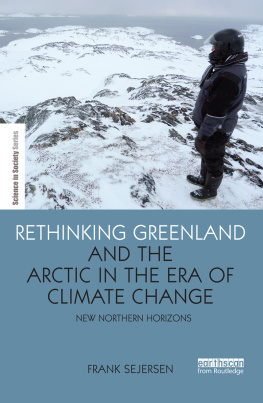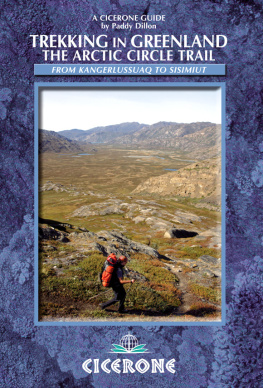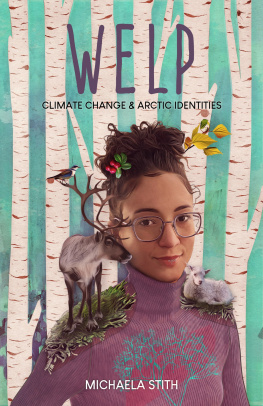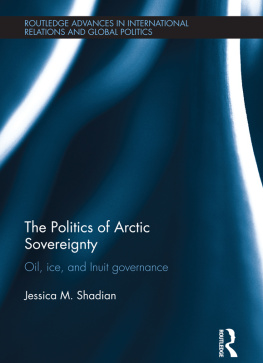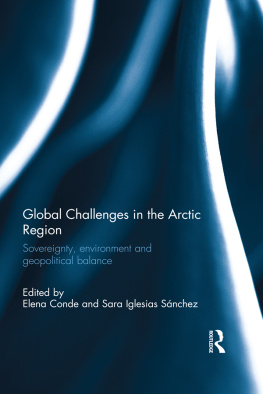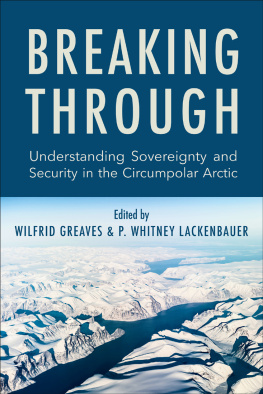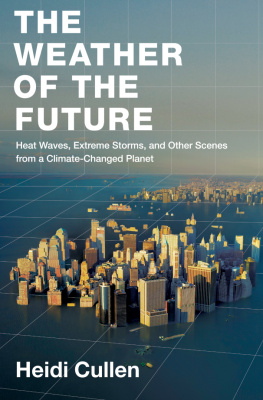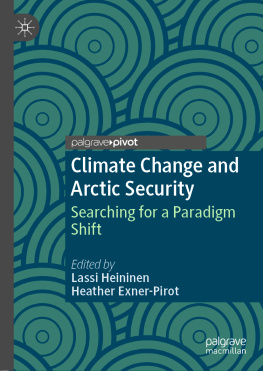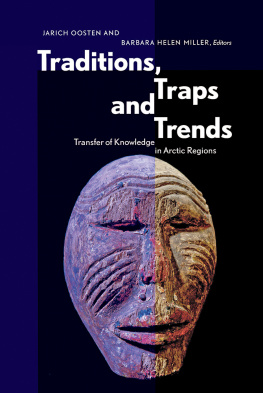Rethinking Greenland and the Arctic in the Era of Climate Change
This groundbreaking book investigates how Arctic indigenous communities deal with the challenges of climate change and how they strive to develop self-determination. Adopting an anthropological focus on Greenlands vision to boost extractive industries and transform society, the book examines how indigenous communities engage with climate change and development discourses. It applies a critical and comparative approach, integrating both local perspectives and adaptation research from Canada and Greenland to make the case for recasting the way the Arctic and Inuit are approached conceptually and politically. The emphasis on indigenous peoples as future-makers and rights-holders paves the way for a new understanding of the concept of indigenous knowledge and a more sensitive appreciation of predicaments and dynamics in the Arctic.
This book will be of interest to postgraduate students and researchers in environmental studies, development studies and area studies.
Frank Sejersen is Associate Professor in the Department of Cross-Cultural and Regional Studies at the University of Copenhagen, Denmark.
Science in Society Series
Series Editor: Steve Rayner
Institute for Science, Innovation and Society, University of Oxford
Editorial Board: Jason Blackstock, Bjorn Ola Linner, Susan Owens, Timothy ORiordan, Arthur Peterson, Nick Pidgeon, Dan Sarewitz, Andy Sterling, Chris Tyler, Andrew Webster, Steve Yearley
The Earthscan Science in Society Series aims to publish new high-quality research, teaching, practical and policy-related books on topics that address the complex and vitally important interface between science and society.
Vaccine Anxieties
Global Science, child health and society
Melissa Leach and James Fairhead
Democratizing Technology
Risk, responsibility and the Regulation of Chemicals
Anne Chapman
Genomics and Society
Legal, ethical and social dimensions
Edited by George Gaskell and Martin W. Bauer
A Web of Prevention
Biological weapons, life sciences and the governance of research
Edited by Brian Rappert and Caitrona McLeish
Nanotechnology
Risk, ethics and law
Edited by Geoffrey Hunt and Michael Mehta
Unnatural Selection
The challenges of engineering tomorrows people
Edited by Peter Healey and Steve Rayner
Debating Climate Change
Pathways through argument to agreement
Elizabeth L. Malone
Business Planning for Turbulent Times
New methods for applying scenarios
Edited by Rafael Ramrez, John W. Selsky and Kees van der Heijden
Influenza and Public Health
Learning from past pandemics
Tamara Giles-Vernick, Susan Craddock and Jennifer Gunn
Animals as Biotechnology
Ethics, sustainability and critical animal studies
Richard Twine
Uncertainty in Policy Making
Values and evidence in complex decisions
Michael Heazle
The Limits to Scarcity
Contesting the politics of allocation
Lyla Mehta
Rationality and Ritual
Participation and exclusion in nuclear decision making, 2nd Ed.
Brian Wynne
Integrating Science and Policy
Vulnerability and resilience in global environmental change
Edited by Roger E. Kasperson and Mimi Berberian
Dynamics of Disaster
Lessons on risk response and recovery
Rachel A. Dowty Beech and Barbara Allen
The Social Dynamics of Carbon Capture and Storage
Understanding CCS Representations, Governance and Innovation
Edited by Nils Markusson, Simon Shackley and Benjamin Evar
Science and Public Reason
Sheila Jasanoff
Marginalized Reproduction
Ethnicity, infertility and reproductive technologies
Edited by Lorraine Culley, Nicky Hudson and Floor van Rooij
Resolving Messy Policy Problems
Handling conflict in environmental, transport, health and ageing policy
Steven Ney
The Hartwell Approach to Climate Policy
Edited by Steve Rayner and Mark Caine
Reconstructing Sustainability Science
Knowledge and action for a sustainable future
Thaddeus R. Miller
Experiment Earth
Responsible innovation in geoengineering
Jack Stilgoe
Rethinking Greenland and the Arctic in the Era of Climate Change
New northern horizons
Frank Sejersen
Rethinking Greenland and the Arctic in the Era of Climate Change
New northern horizons
Frank Sejersen
First published 2015
by Routledge
2 Park Square, Milton Park, Abingdon, Oxon OX14 4RN
and by Routledge
711 Third Avenue, New York, NY 10017
Routledge is an imprint of the Taylor & Francis Group, an informa business
2015 Frank Sejersen
The right of Frank Sejersen to be identified as author of this work has been asserted by him/her in accordance with sections 77 and 78 of the Copyright, Designs and Patents Act 1988.
All rights reserved. No part of this book may be reprinted or reproduced or utilised in any form or by any electronic, mechanical, or other means, now known or hereafter invented, including photocopying and recording, or in any information storage or retrieval system, without permission in writing from the publishers.
Trademark notice : Product or corporate names may be trademarks or registered trademarks, and are used only for identification and explanation without intent to infringe.
British Library Cataloguing-in-Publication Data
A catalogue record for this book is available from the British Library
Library of Congress Cataloging-in-Publication Data
Sejersen, Frank.
Rethinking Greenland and the arctic in the era of climate change: new northern
horizons / Frank Sejersen.
pages cm
1. Indigenous peoplesEcologyArctic regions. 2. Indigenous peoplesEcologyGreenland.
3. InuitGreenland. 4. GreenlandEnvironmental conditions. 5. Arctic regions
Environmental conditions. 6. Climatic changesSocial aspectsGreenland. 7. Climatic
changesEnvironmental aspectsGreenland. 8. Climatic changesSocial aspects
Arctic regions. 9. Climatic changesEnvironmental aspectsArctic regions. I. Title.
E99.E7S423 2015
305.897'0982dc23
2014038110
ISBN: 978-1-138-84515-2 (hbk)
ISBN: 978-1-315-72830-8 (ebk)
Typeset in Goudy
by diacriTech, Chennai
To Pernille, Emma Line & Rosa
Table of contents
Although this book draws on the fieldworks and anthropological research I have pursued in Greenland since 1995, the main two drivers for writing the book are the increasing and immense amount of research publications on climate change adaptation in the Arctic and the announcement of the Greenlandic authorities to start up hyper-industrialization. I am intrigued by the adaptation literature because it is difficult for me to recognize the people and living communities in the models and discourses to which these scholars subscribe. As the media also bases much of its coverage of Arctic climate change on the idea of Inuit as victims and vulnerable, the political agency, creative future-making and dynamic livelihoods of indigenous peoples tend to be put in the shadow or even forgotten. In 2006, when the Greenlandic authorities initiated a comprehensive political strategy to transform their society by opening large-scale and extractive industries, they set in motion a comprehensive rethinking of the Greenlandic society, what it means to be a Greenlander and what position the nation were to have in the world. So, two different tendencies were present: one that stresses victimization, and one that stresses creative future-making. It is between these two tendencies that this book emerged. Research into these issues became possible in 2009, when the European Research Council made a generous research grant (Project No: 229459) to the large cross-disciplinary project Waterworlds: Natural Environmental Disasters and Social Resilience in Anthropological Perspective with Professor Kirsten Hastrup as principal investigator. The ambition of the research project was to study local, social responses to environmental disasters related to water, as spurred by the melting of ice in the Arctic and in mountainous glacier areas, the rising of seas that flood islands and coastal communities across the globe and the drying of lands accelerating desertification in large parts of Africa and elsewhere. Furthermore, the aim was to contribute to a renewed theory of social resilience that builds on the actualities of social life in distinct localities, thus focusing on human agency as the basis for peoples quest for certainty in exposed environments. I was part of this five-year project and my sub-project Ice, climate and development in Greenland focused on how the changing icescape in the Arctic was creatively approached, understood and made part of peoples futures.

